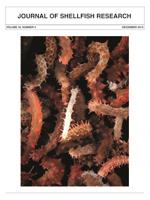In quota-managed fisheries in which harvestable mass of individuals varies seasonally, harvesting can be tailored either to reduce exploitation rates without lowering quota or to increase catch limits without raising the fisheries' risk profile. Using data from the South Australian greenlip abalone (Haliotis laevigata) fishery, we demonstrate that changing harvesting from summer to autumn would allow either (1) a 13% reduction in the number of abalone harvested for the same quota, thereby reducing fishing mortality; or (2) a 13% increase in the landed weight of catch (16.5% increase in revenue) while leaving the number and mean length of individuals harvested unchanged. These benefits accrue because (1) the landed weight-to-length ratio is greater in autumn and (2) heavier abalone are more valuable. Consequently, changing the seasonal timing of harvest can serve to increase landed revenue, reduce exploitation rate, or achieve a combination of these 2 management objectives.
How to translate text using browser tools
1 December 2013
Maximum Yield or Minimum Risk: Using Biological Data to Optimize Harvest Strategies in a Southern Australian Molluscan Fishery
Ben Stobart,
Stephen Mayfield,
Richard McGarvey
ACCESS THE FULL ARTICLE

Journal of Shellfish Research
Vol. 32 • No. 3
December 2013
Vol. 32 • No. 3
December 2013
Abalone
closed season
Fishery management
Haliotis laevigata
harvest strategy
quota fishery
steady-state model




